7 Stunning Facts About the Baobab Tree
That Will Surprise You
Want to know what’s so special about baobab trees?
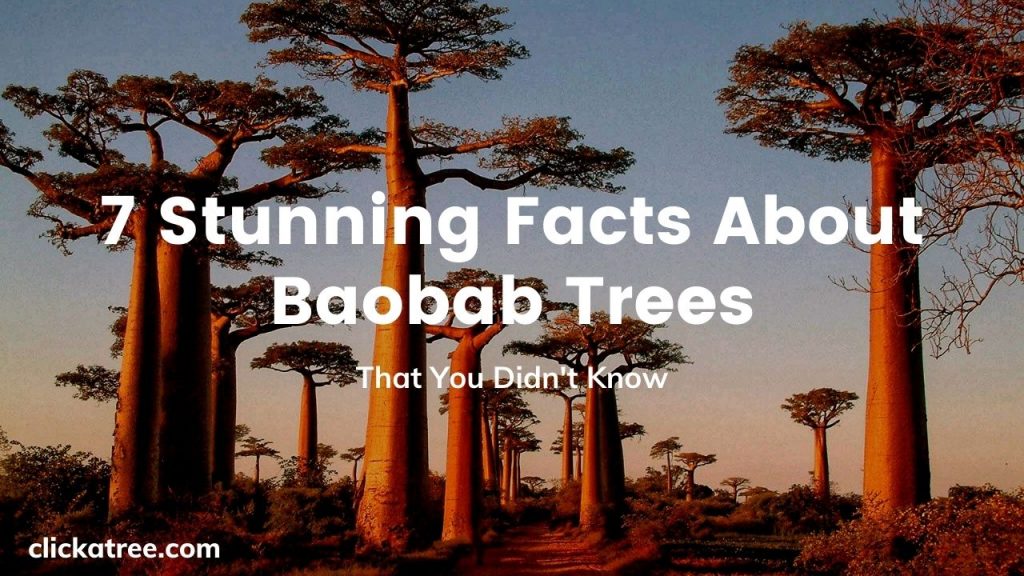
The baobab tree is one of the most useful trees in the world. Every part of it is astounding in its properties and benefits – from its young leaves and seeds to its ancient hollowed out trunk. Did you know baobab trees live for thousands of years and support entire ecosystems?
Read on to discover 7 stunning facts about these remarkable trees!
1. Where do baobab trees grow?
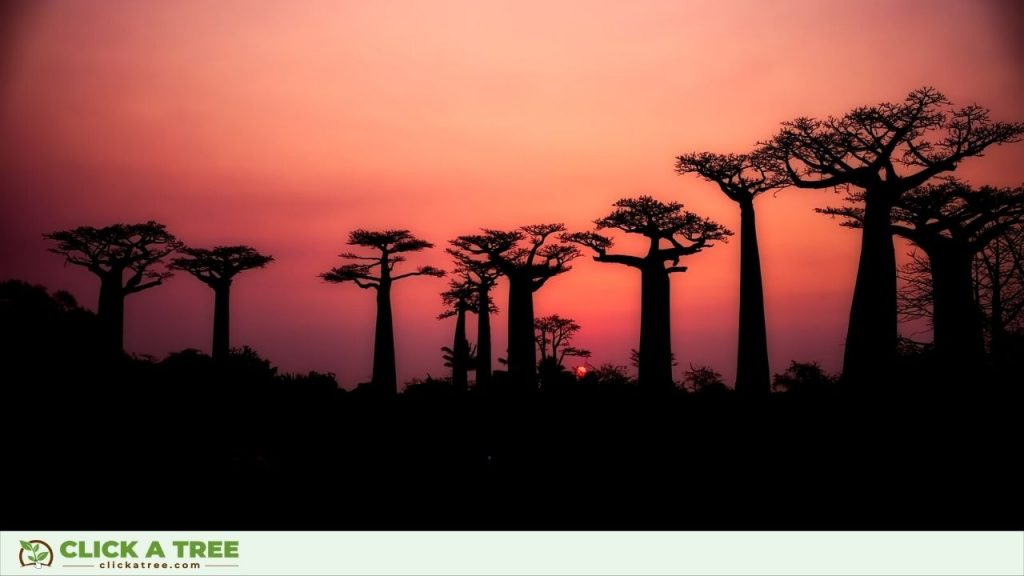
There are 9 species of baobab tree. Six of these grow only in Madagascar, while two are found in large parts of Africa, and one species of baobab has made it all the way to Australia.
Opinions are divided as to when this happened, but it’s known that baobab trees have been around since the time of the dinosaurs, 200 million years ago!
2. Baobab trees are among the longest-lived trees
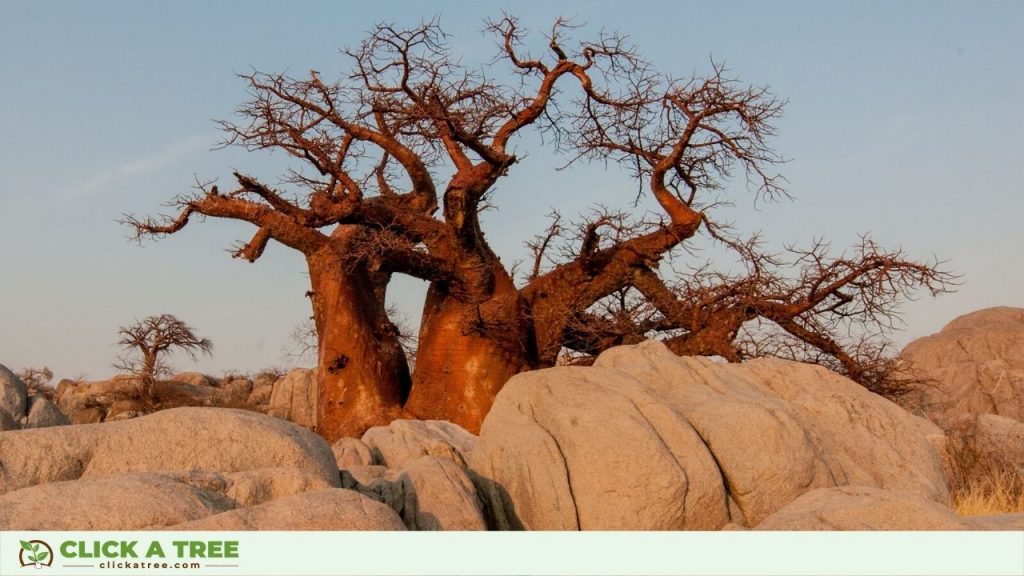
Baobab trees can live to become thousands of years old. The oldest baobab tree on record was the Panke baobab in Zimbabwe which lived to be a venerable 2450 years old1.
Baobab trees only have very faint growth rings. So carbon-14 dating is used to determine their age, which is very appropriate for these ancient living fossils.
3. Baobab trees are record-breakingly enormous
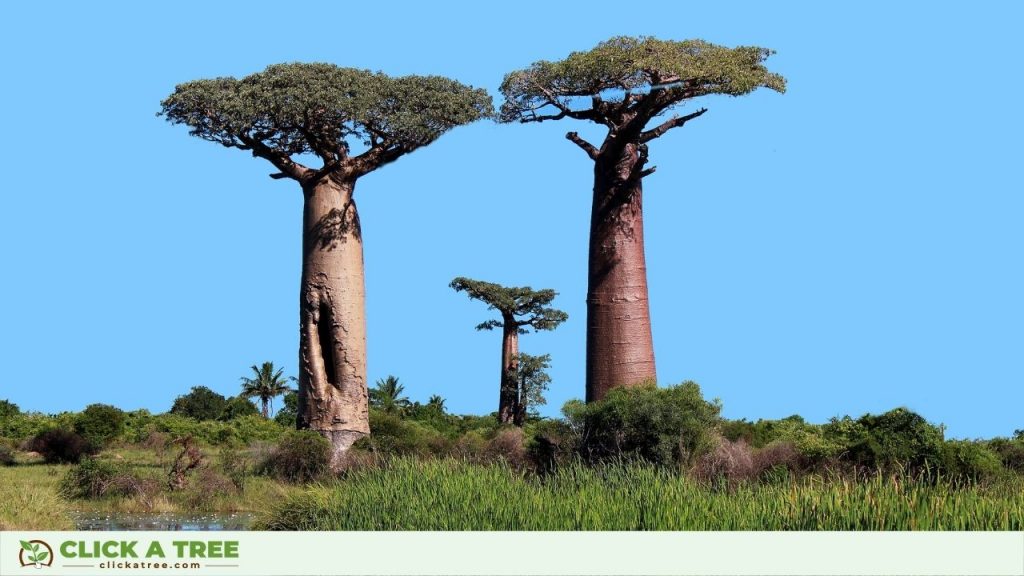
The largest species of baobab tree is the African baobab (Adansonia digitata). According to the Guinness Book of World Records, the largest living baobab is the Sagole Big Tree located in South Africa.
It measures a whopping 60.6 square metersat its base, with a height of 19.8 m and an above-ground dry mass estimated to be 54 tonnes2.
4. Baobab trees are the trees of life
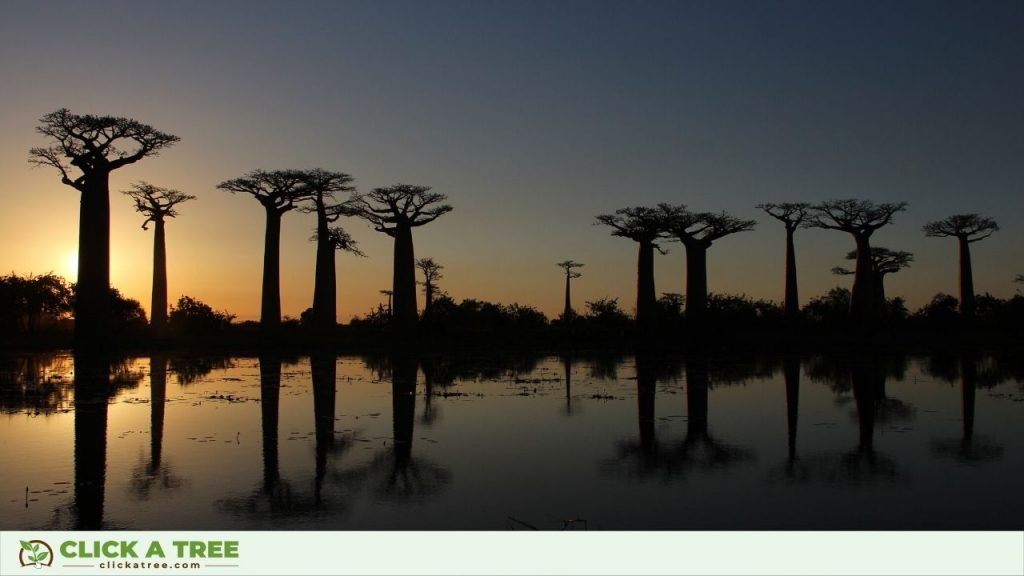
Baobab trees can store large amounts of fresh water in their extraordinary trunks. This makes them true life-savers during times when water is scarce.
It also allows the baobab tree to produce nutritious fruits even during the driest years. That’s why the baobab tree is called the tree of life.
Fancy growing your own supertree? You can! The baobab is one of the trees planted by Click A Tree as part of our work in Ghana. Each contribution plants truly useful trees like the baobab which will provide the community with water, shade and a rich harvest of fruits in years to come.
You can find out more about our tree-planting project in Ghana here.
5. Baobab fruit are a superfood
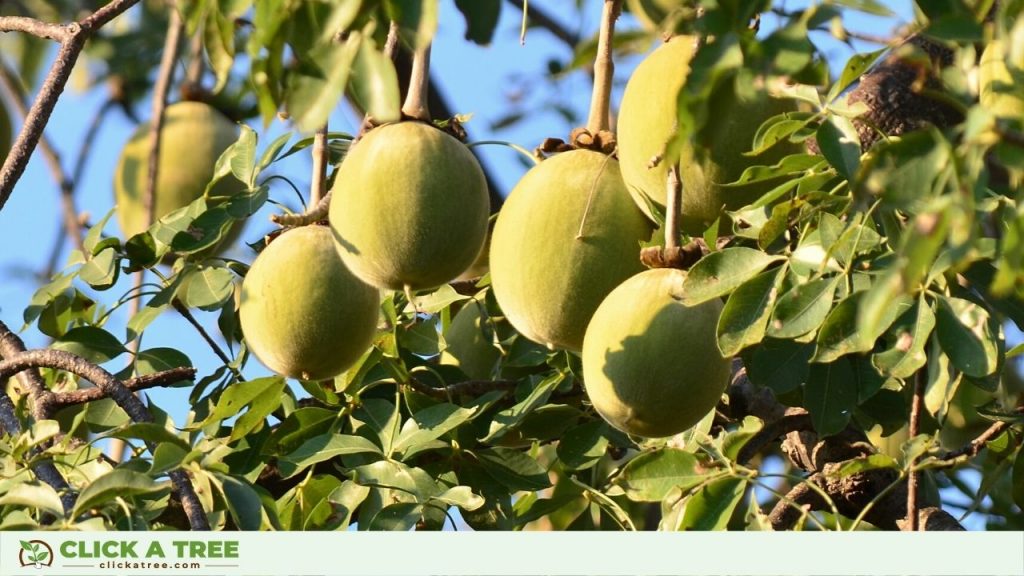
Baobab fruit can be used both fresh and dried. It is super-nutritious, especially in its dried form which develops naturally on the branch and is sold as a powder. The fruit powder requires no preservatives or artificial processes to stay fresh for 2 years3! These are awesome news, as the baobab fruit are an excellent source of antioxidants, vitamins, minerals and fibre.
Its powder contains4:
Baobab fruit are a superfood.
They contain more vitamin C than oranges and more potassium than bananas.
The fruit, leaves, bark and seeds of the baobab tree all have strong health benefits, and are traditionally used to treat diseases, reduce fever and stimulate the immune system.
6. Baobab seed oil for skin and hair beauty
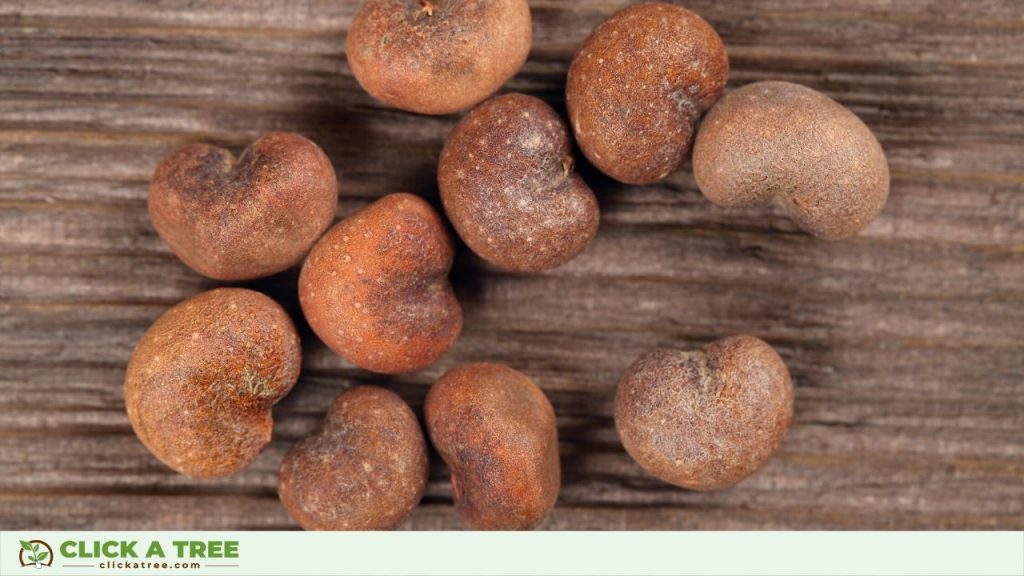
The oil pressed from baobab tree seeds has long been a favoured ingredient in natural skincare and hair care products. Baobab seed oil is intensely moisturising and contains linoleic, linolenic and omega-3 fatty acids which help soothe dry and irritated skin5. Baobab seed oil is also naturally insect-repelling!
7. Baobab trees are crucial parts of the ecosystem
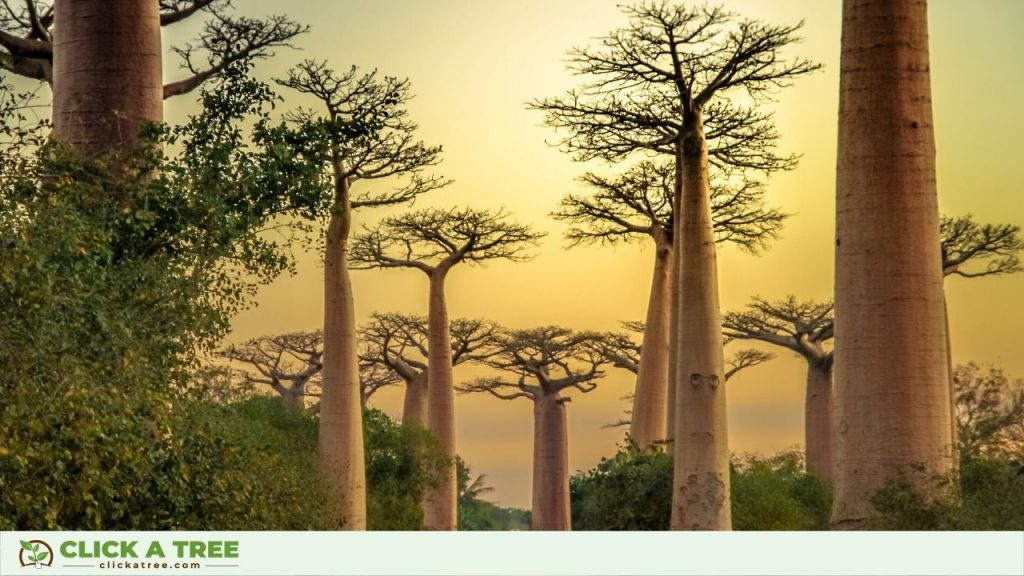
Baobab trees play a huge role in the ecosystem of the dry African savannas. Firstly, they help to keep the soil humid, slow soil erosion and recycle essential nutrients. Secondly, hundreds of animals find food, water and shelter in baobab trees. Elephants eat the bark for moisture when there is no water nearby. They also eat the fruit and help the baobab tree with seed dispersal in return.
Baobab – a tree like no other
Baobab trees are truly special since there are over 300 known uses for their products. From a food source and shelter to cosmetic products and medicines, baobab trees are essential not only to humans but also to animals and other plants. These forest giants have had over 200 million years to become supertrees!
If you have enjoyed this article, please share it with your friends and family. For more fascinating stories about trees like the baobab, subscribe to our newsletter.
PS: Each new sign up plants a tree!
Sources
1 https://www.nature.com/articles/d41586-018-05411-7
2 https://www.guinnessworldrecords.com/world-records/635578-largest-living-baobab-tree-volume
3 https://www.medicalnewstoday.com/articles/306445#diet
4 https://fdc.nal.usda.gov/fdc-app.html#/food-details/167806/nutrients